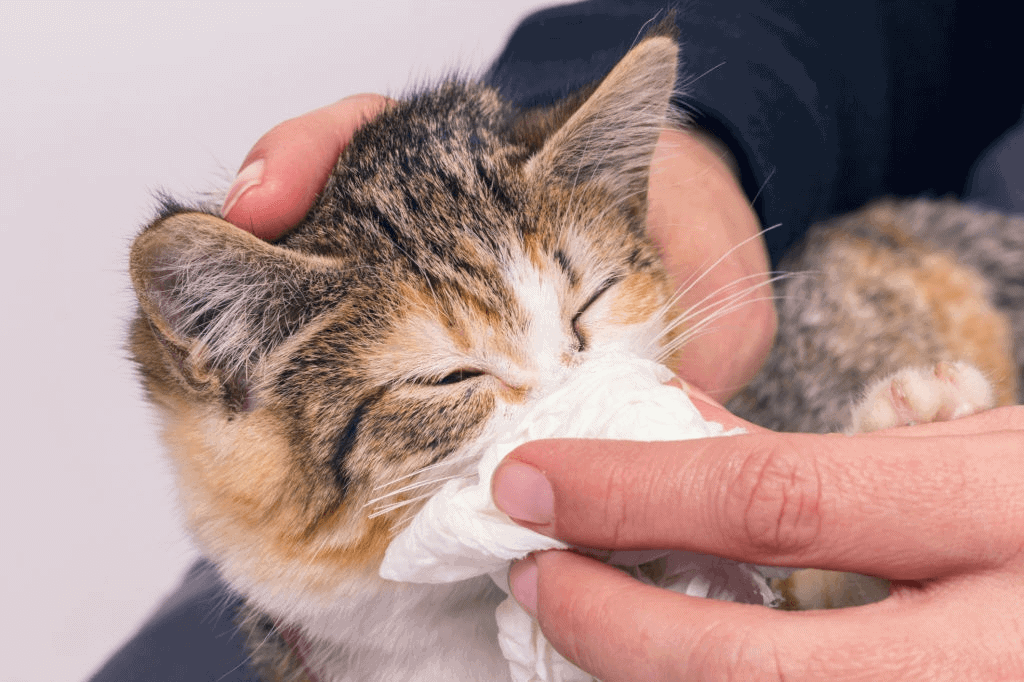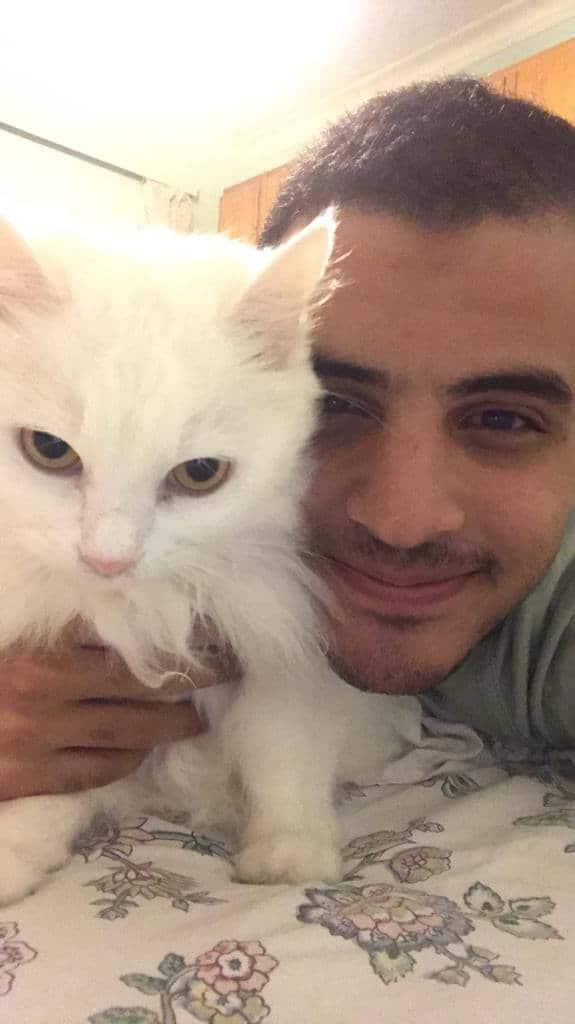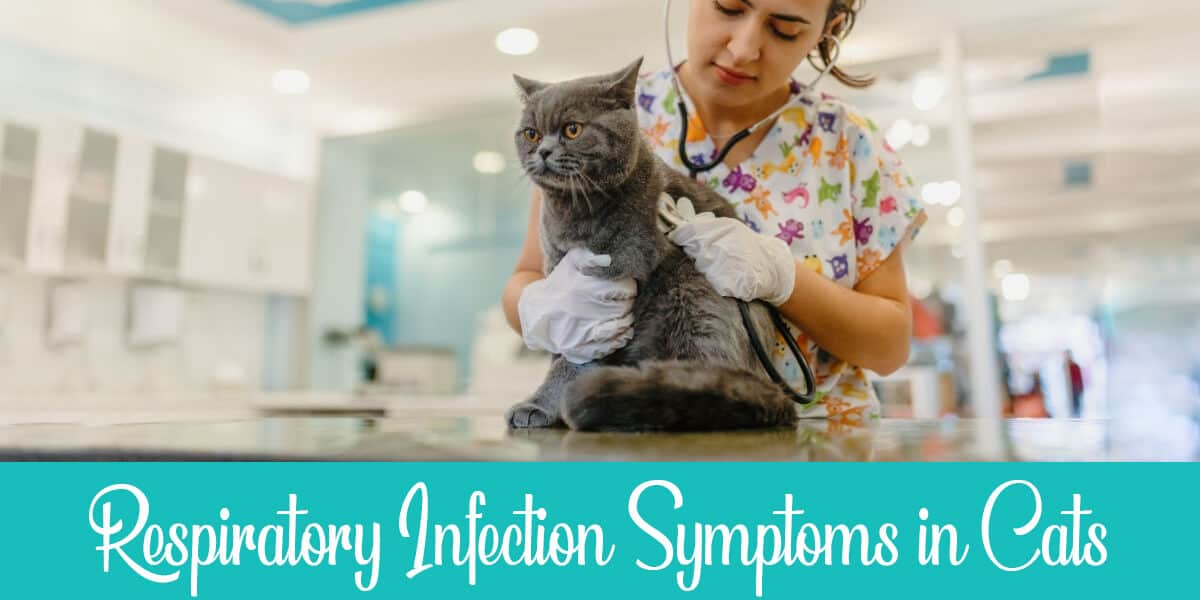Is your feline friend feeling a little under the weather? Your cat might’ve come down with a common cold. If the cat’s situation persists, it could be something worse, like an upper respiratory infection.
Cats usually mingle a lot with their kind. That’s how the infection passes on. A bacteria or virus could’ve latched on to your furry friend.
Not sure if it’s an infection? Read on to pinpoint some of the symptoms of upper respiratory infection in cats. If your cat is experiencing some of the symptoms, you might want to consider scheduling a vet visit.
Table of Contents
The Most Common Symptoms of Upper Respiratory Infection in Cats
Upper respiratory infections are generally caused by viral, bacterial, or fungal infections and transmissions. The infection in cats can vary from being easily treatable to almost fatal. The most common symptoms usually include conjunctivitis, sneezing, nasal discharge, coughing, and fever.
Conjunctivitis
Check your cat’s eyes. Goopy eyes are a characteristic of conjunctivitis and one of the more common symptoms of upper respiratory infections. Conjunctivitis is caused by an infectious virus, making it easily transmissible to most cats.
If your cat’s eye is oozing some clear or discolored discharge, it could point to a less serious infection.
Nevertheless, the eye infection is most associated with the Feline Herpes Virus (FHV). The virus is a widespread cause of upper respiratory infections, affecting over 97% of the cat population.
This is why we advise you to also check other symptoms before making a full diagnosis of your cat’s respiratory health.
Sneezing
Another recurrent symptom of an upper respiratory infection is your cat sneezing. It indicates a viral or bacterial infection.
Typically, you might find this symptom in younger cats since they come from crowded animal shelters. The best method to avoid any serious infection is by vaccinating them early.
Bordetella Bronchiseptica is a virus that causes upper respiratory infections. Sneezing is both a means of transmission of the virus and a symptom of it.
It could develop into a life-threatening condition and cause pneumonia in younger cats or those with weaker immunity.
Fever

It might be harder to figure out if your cat is experiencing a fever. Unlike humans, you can’t know from a single touch. The only option is to take their temperature.
The average temperature range of cats is 100.4 to 102.5 degrees Fahrenheit. Anything higher than 102.5 degrees Fahrenheit can be a cause for concern, but fevers help combat infections.
The immune system activates the high temperature in cats and most animals as a defense mechanism against bacterial and viral infections. Most of which are tell-tale signs of an upper respiratory infection.
Loss of Appetite
Cats are already picky with their food, so it might be challenging to know when there’s a serious issue at hand.
Your cat might lose interest in their meal because they can’t smell it. A congested nose will close up their sense of smell and cause anorexic tendencies. Consequently, lack of nutrition will only worsen their upper respiratory infection.
The best solution is to use a vaporizer to clear up their congestion. You can also place the cat in a steamy room to relieve this irritating symptom.
Nasal Discharge
This symptom can be linked with FHV, which is a viral infection that can cause secretion sheddings in the nasal area.
Mucus and pus discharge occurs from bacterial colonizations in the nasal passageways. The symptom is recurringly found in fungal infections as well. To keep this discharge from bothering your cat, you can opt for nasal flushes to clean out the airways.
Nasal flushes will also remove remaining foreign bodies and give your cat better chances of fighting off the upper respiratory infection.
Coughing
Since your cat is experiencing nasal discharge due to the overproduction of mucus, this can wear down their throat.
When a cat is coughing out a hairball, it’s actually vomiting it out, not coughing. It might be difficult to pinpoint when your cat is vomiting or coughing. If the cat is coughing, it’s likely a sign of upper respiratory infection.
Checking with your vet will give you the most appropriate answer for your cat’s condition.
Related Posts:
– Signs of Toxoplasmosis in Cats
– How to Know if My Cat Suffers from Rat Poisoning?
– Symptoms of Mercury Poisoning in Cats
– How to Detect Intestinal Blockage in Cats?
Drooling
When your cat is drooling, this could point to an upper respiratory infection. The source of infection can come from the cat’s nose, mouth, or throat.
Nevertheless, you shouldn’t suspect an upper respiratory infection when your cat is drooling right away. This symptom has several other probable causes, such as high-stress levels, nausea, organ sickness, and overproduction of bodily fluids.
Lack of Energy
During an upper respiratory infection, your cat’s immune system is working heavily to fight off the bacteria or virus. Your cat might not feel as energetic as they once were.
They will need some proper rest to fully recover. We suggest you keep them in a comfortable, quiet, and warm area. You should also monitor your cat’s condition and go to the vet for treatment.
Tongue, Mouth, and Nose Ulcers
In some rare cases, tongue, mouth, and nose ulcerations might start to appear on your cat. It can be a sign of Feline Calicivirus causing the upper respiratory infection.
Feline Calicivirus is developed from a viral transmission. Your vet might prescribe oral antibiotics for your cat’s ulcerations.
Difficulty Breathing
Another rare symptom of upper respiratory infection could be difficulty in breathing. If you notice your cat taking labored breaths, you should know that it’s one of the most severe symptoms.
Difficulty breathing could also point to viral infections such as Bordetella Bronchiseptica. Your cat is likely panting due to the nasal congestion they’re experiencing.
To Conclude
Cats habitually hide their symptoms well from their owners. You should always keep an eye out if you start to notice any of the symptoms mentioned above.
If your furry friend’s upper respiratory infection worsens and persists, we advise you to visit your vet to provide you with proper medication such as antibiotics if the cause of the infection is bacterial.
The infection resolves itself within one to three weeks in most cases. We hope your cat will be in good shape in no time.

I’ve been living with cats since 2008 and I can confidently say I have more feline friends than humans lol. I currently live with 5 cats in different life stages; two of them are less than one year old, one is 2-ish years old and the oldest two are 9-ish years old. I’ve developed a strong bond with cats over the years and I’m eager to share my experience through this blog. You can learn more about my cats here.

